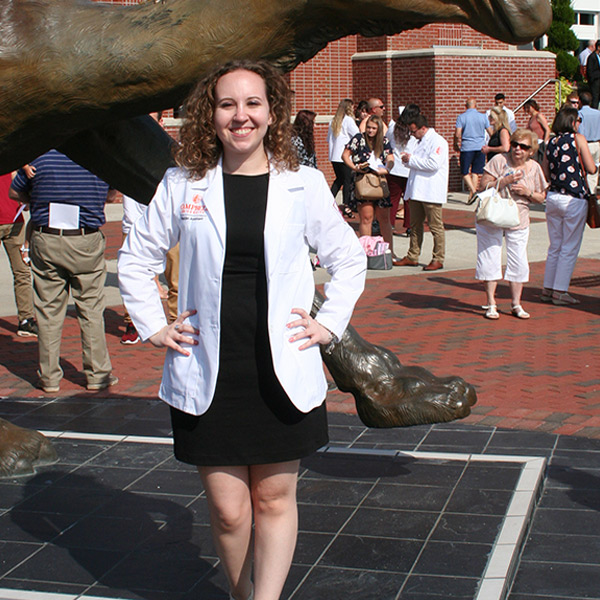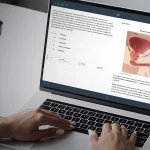Written by Kathryn Allen, PA-S2
“Here, you can go see this patient,” my preceptor said as she handed me a patient’s chart. It was the second day of my first clinical rotation, family medicine. Thanks to COVID-19, I had spent the last four months barely talking to people or leaving my apartment, let alone examining a patient. I wasn’t sure if I even remembered how to use my stethoscope. But I took a deep breath, knocked on the door, and introduced myself. Thankfully, this patient, along with a large majority of the others during my rotation, was very kind and did not seem to notice as I fumbled through the history and physical that day. And as the days and weeks went on, my preceptor and I fell into a routine, and I became more comfortable with each patient I saw.
I did not know what to expect before starting my family medicine rotation. Looking at the PAEA topic list and blueprint, I was extremely intimidated. It was HUGE, and I felt like it covered almost everything I had learned during my didactic year. How was I supposed to remember all of this stuff and use it to take care of actual patients? COVID added yet another level of anxiety to the entire situation. Would the clinic have proper procedures in place? Would patients be willing to wear masks for their entire visit? Would I feel comfortable being close to and touching patients? What if I was exposed to COVID? Thankfully these fears were all put to rest as masks and protocol became the norm.
Now, on the other side and having completed two rotations, here is some advice for tackling family medicine (and clinical year in general):
1. It’s okay not to know everything, but you will be surprised by how much you do know.
Whether it’s your first rotation or your tenth, your family medicine preceptor does not expect you to know everything on day one. What they do expect is that you are willing to learn. It is okay to say “I don’t know,” but be sure to follow that up with “but I’ll look it up” (and then actually look it up). Getting things wrong is a great way to learn, but I think you will be surprised by how much you actually remember from the didactic year.
2. Prevention and education are a huge part of family medicine.
During my rotation, I spent a lot of time educating patients on the importance of various screening tests and immunizations. Healthy lifestyle choices and the importance of medication compliance were also common topics of discussion. Make sure you meet patients where they’re at instead of simply lecturing to them. Your patients are human beings, so talk to them as such. Try to understand their situation instead of making assumptions. Many times you will feel like you are talking to a brick wall, but it feels AMAZING when you actually get through to a patient and make a difference.
3. Study a little every day.
Even if it’s only 10 practice questions, do something every day after your rotation. I know the hours are long but every little bit counts.
4. Take the opportunity to learn from other providers and staff.
I was at a single provider practice, but I was able to pair up with the nurses to learn/practice administering immunizations and performing spirometry testing. If there are other providers at your rotation site, take advantage to see how other people work. If they know you’re interested, they may also show you some really unique patients and diagnoses.
5. Focus on common conditions when preparing for your rotation.
Like I mentioned before, the PAEA family medicine topic list is massive. While, yes, you need to know those things for your exam, you will likely not see a big chunk of them in the clinic. What you will see will be based primarily on the patient population your preceptor sees, which can range in family medicine. Hypertension, type II diabetes, dyslipidemia, UTIs, and annual physicals were things I saw every day. I highly recommend brushing up on these topics before your rotation.
6. Rotations will look different for everyone.
My preceptor only saw adolescents and adults, and a large majority of her patient population were geriatric patients. Other preceptors will see patients from birth to death. No two rotations look the same, so don’t compare yourself to your classmates or students in other programs. The experience you will have is valuable and still a great learning experience.
7. Have an open mind and a readiness to learn.
This is the key to success in clinical rotations. The worst thing you can do is be cocky or overconfident. Each rotation is a chance to start fresh. While this comes with anxiety, it also provides a unique opportunity to learn and grow, both as a future PA and as a human being.
Many things have changed with clinical rotations in the world of COVID, but the heart of the experience hasn’t changed: providing care for patients who need it. COVID didn’t eliminate hypertension, diabetes, high cholesterol, or cancer. In fact, it has made us aware that preventive medicine and controlling chronic conditions is more important than ever. Regardless of where you plan on spending your future career, family medicine is a huge part of healthcare and the foundation of the PA profession. Enjoy your clinical year and take advantage of the opportunity to learn while it’s still okay to mess up.

Kathryn is a former three-time applicant currently in her 2nd year of PA school at Campbell University in NC. She is currently on clinical rotations and will graduate in the summer of 2021. She enjoys helping pre-PAs and PA students on their journeys while sharing her own journey, which can be found on IG @pa_kathryn.
If you are a PA student prepping for an upcoming PANCE exam and want to optimize your chances of success, click here for your FREE trial of our PANCE QBank. We’ll have you ready to ace the PANCE on exam day.




